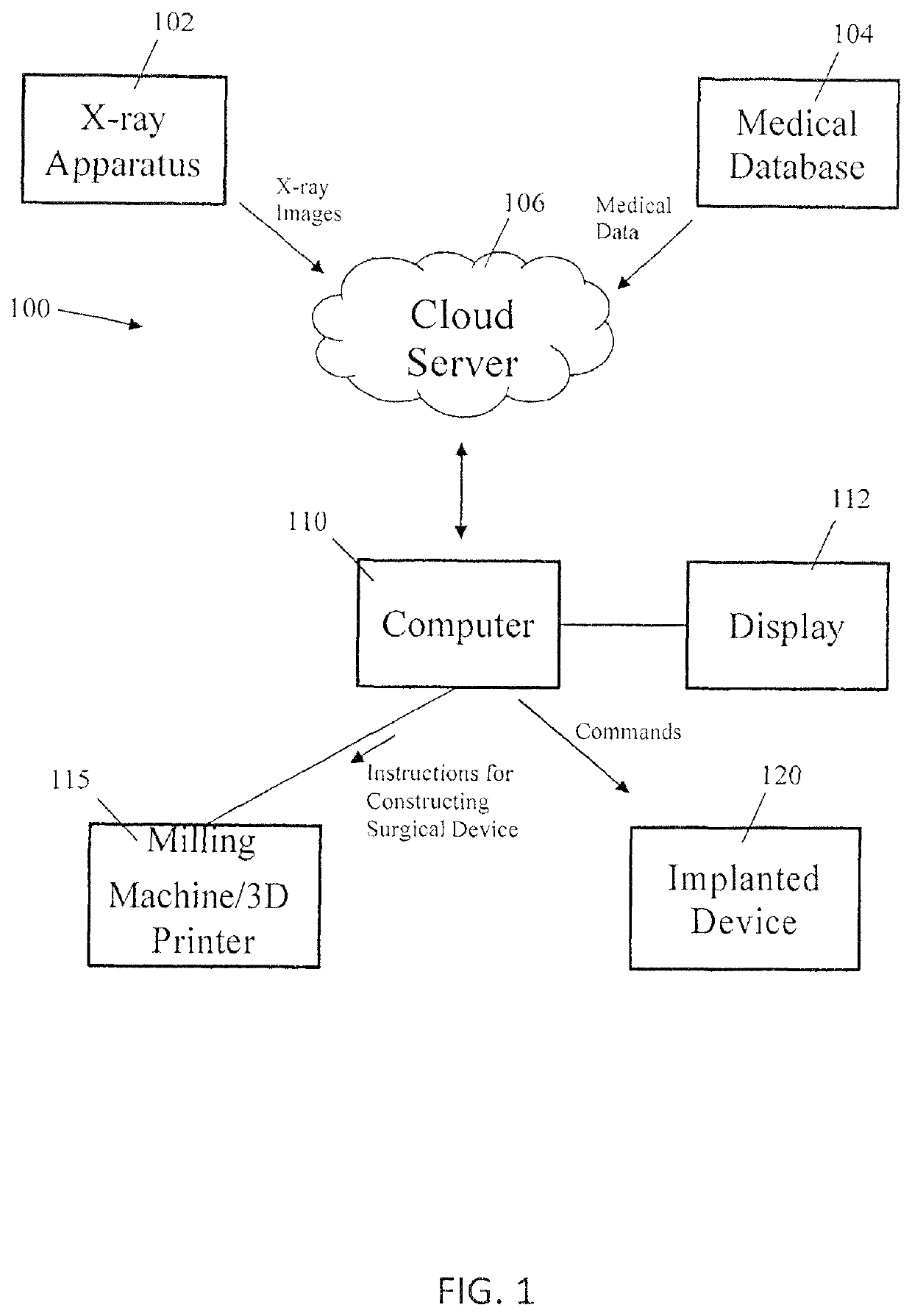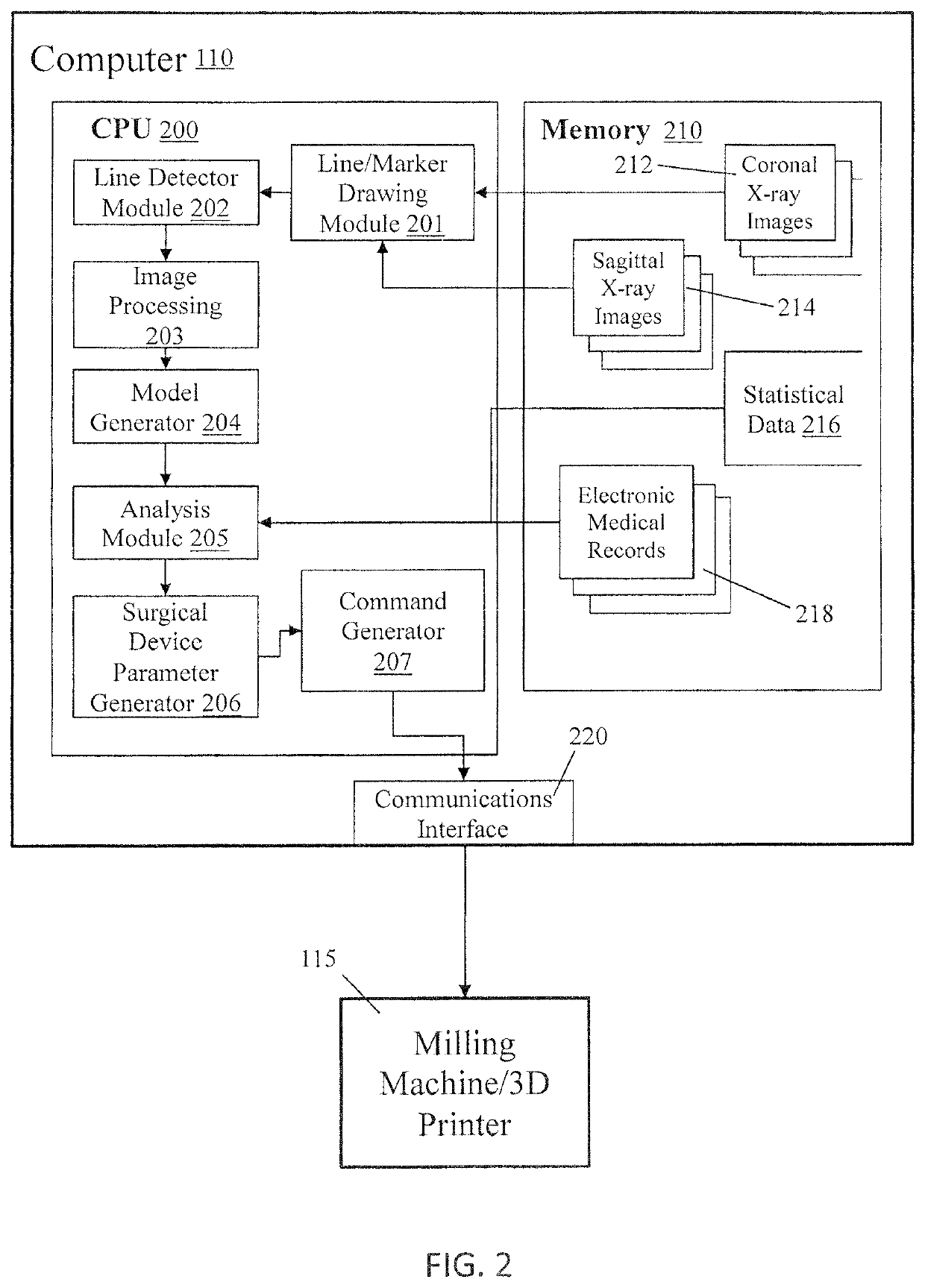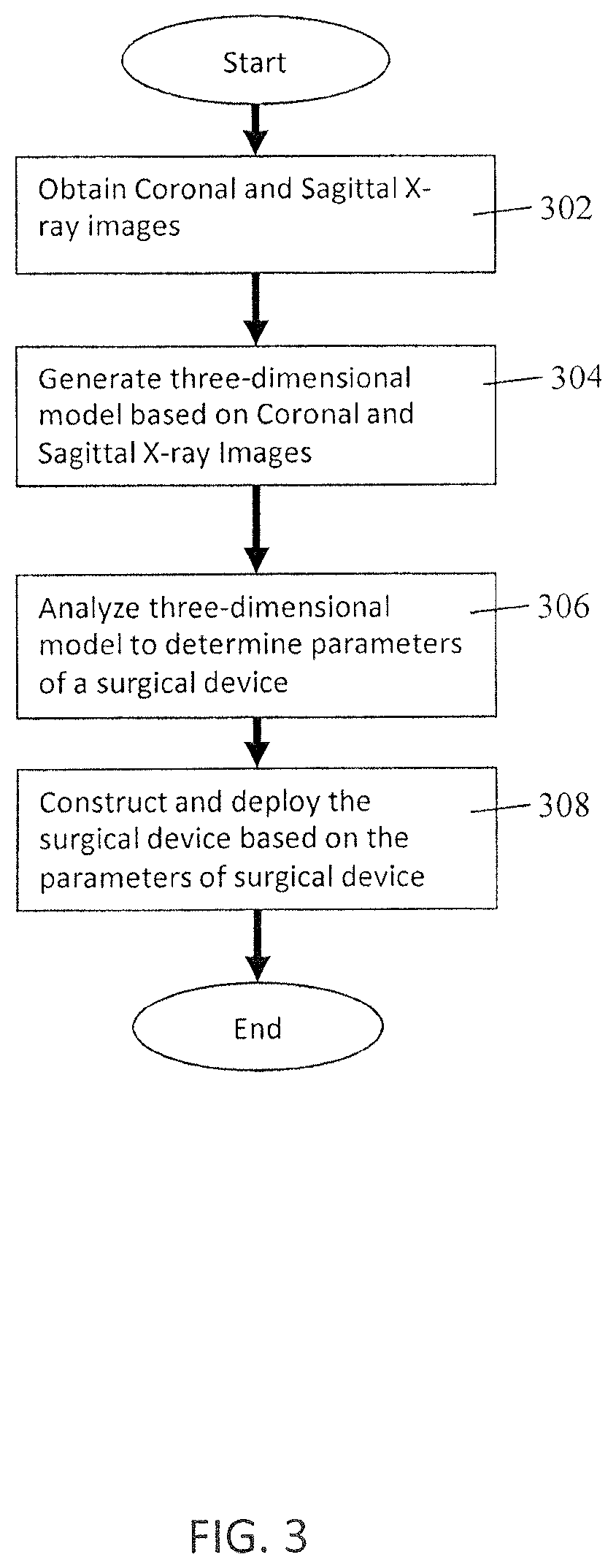Systems and methods for simulating spine and skeletal system pathologies
a system and skeletal system technology, applied in the field of human skeleton model, can solve the problems of inability to use the alignment of the head with the center of the pelvis as an axis of reference, inability to consider the alignment of the spine in the coronal or axial plane, and inability to accurately predict postoperative results. , to achieve the effect of better choice and better prediction of postoperative results
- Summary
- Abstract
- Description
- Claims
- Application Information
AI Technical Summary
Benefits of technology
Problems solved by technology
Method used
Image
Examples
Embodiment Construction
[0079]Embodiments of the present spine modeling systems and methods are now described in detail with reference to the drawings in which like reference numerals designate identical or corresponding elements in each of the several views. As used herein, the term “clinician” refers to a doctor, a nurse, or any other care provider and may include support personnel. Throughout this description, the phrase “in embodiments” and variations on this phrase generally is understood to mean that the particular feature, structure, system, or method being described includes at least one iteration of the disclosed technology. Such phrase should not be read or interpreted to mean that the particular feature, structure, system, or method described is either the best or the only way in which the embodiment can be implemented. Rather, such a phrase should be read to mean an example of a way in which the described technology could be implemented, but need not be the only way to do so.
[0080]As used herei...
PUM
 Login to View More
Login to View More Abstract
Description
Claims
Application Information
 Login to View More
Login to View More - R&D
- Intellectual Property
- Life Sciences
- Materials
- Tech Scout
- Unparalleled Data Quality
- Higher Quality Content
- 60% Fewer Hallucinations
Browse by: Latest US Patents, China's latest patents, Technical Efficacy Thesaurus, Application Domain, Technology Topic, Popular Technical Reports.
© 2025 PatSnap. All rights reserved.Legal|Privacy policy|Modern Slavery Act Transparency Statement|Sitemap|About US| Contact US: help@patsnap.com



